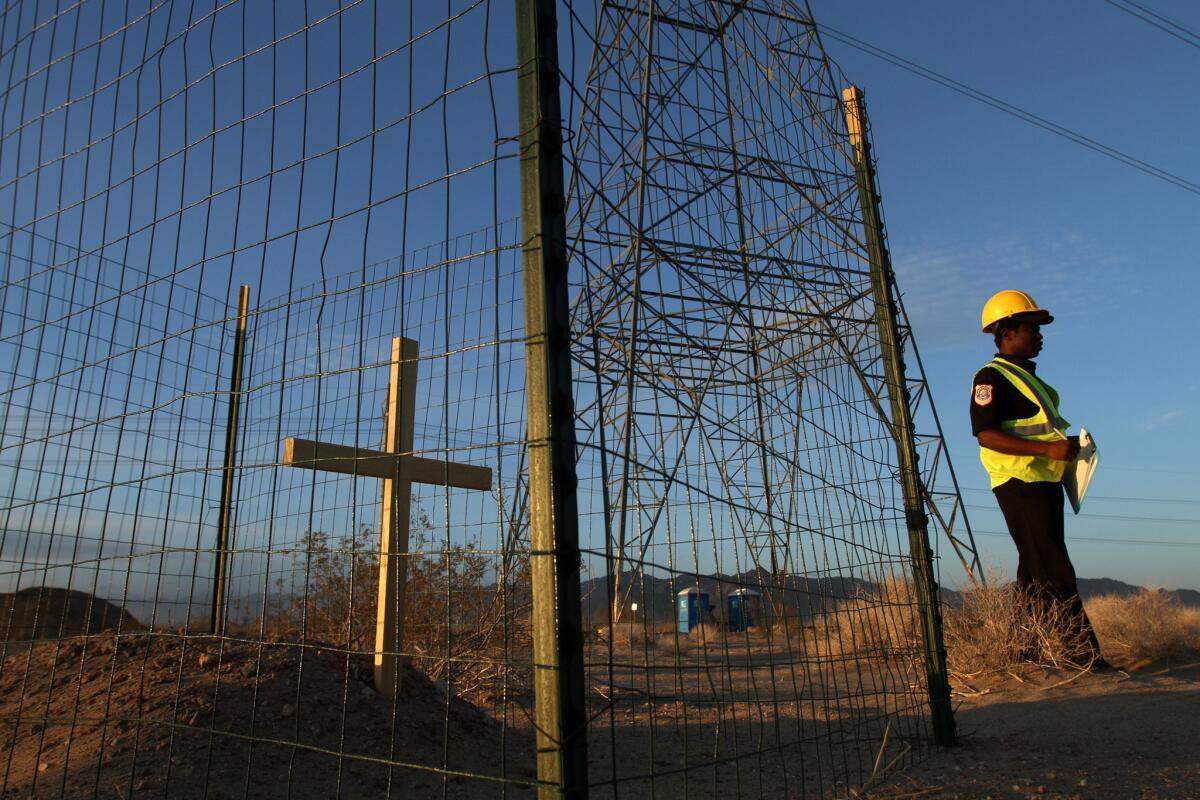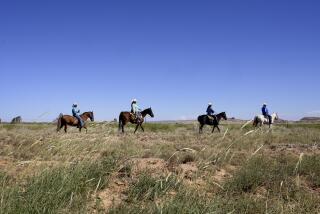Native Americans challenge construction of Mojave Desert solar plant

A federally recognized Indian tribe has filed a lawsuit to block construction of a solar energy facility that will replace 4,000 acres of ancestral homelands in the Mojave Desert with reflective photovoltaic panels.
The Colorado River Indian Tribes’ lawsuit claims the U.S. Bureau of Land Management’s environmental impact statement for the project failed to adequately take into account its effects on the area’s ecosystem, cultural resources, groundwater and the Colorado River.
The tribal group with sovereignty over a 245,000-acre reservation near the work site also claimed that the BLM violated federal law by authorizing construction of Florida-based NextEra Energy Resources’ Blythe II project without first holding “government-to-government” consultations.
The lawsuit aims to delay or permanently enjoin the BLM from “permitting ground disturbing activities” within the project site and from issuing any further notice to proceed until the agency complies with the National Historic Preservation Act, the National Environmental Policy Act and the Federal Lands Policy and Management Act.
In an interview, David Harper, a spokesman for the tribal group’s Mojave Elders Committee, insisted, “We are not against solar power. We are against our ancestors’ remains, funerary objects and cultural artifacts being dug up and carted away from their resting places.”
BLM spokesman Steven Razo declined comment, saying, “We just got the lawsuit. We’re reviewing it.”
Blythe II is expected to generate 485 megawatts of solar electricity on the 4,000 acres of public land. Construction is expected to begin early next year.
The project is on a portion of land originally approved for construction of Palo Verde Solar I’s proposed 1,000-megawatt solar energy generating plant, Blythe I. NextEra purchased the unbuilt assets of Blythe I when Palo Verde’s parent companies filed for Chapter 11 bankruptcy in 2012, the lawsuit said.
The BLM has approved, or is actively considering, 10 gigantic power plants within 50 miles of the CRIT reservation, covering 35,000 acres of ancestral homelands in rural areas that had gone undisturbed for thousands of years.
Disturbing the area’s ancient trails and relics -- grindstones, petroglyphs, hearth sites -- “is taboo,” the lawsuit says, and some members of the tribal group “experience significant spiritual harm when such resources are dug up, relocated or damaged.”
In an earlier dispute, CRIT pleaded with President Obama in 2012 to slow the federal government’s pursuit of massive solar energy projects in the region because of possible damage to Native American cultural resources. The Obama administration didn’t respond.
At that time, earthmovers had churned up artifacts at or in the vicinity of NextEra’s $1-billion Genesis solar project while it was under construction on BLM land near the town of Blythe, about 200 miles east of Los Angeles. The artifacts had been missed by archaeological surveys conducted in a rush to build.
The CRIT reservation was created in 1865 and stretches along the Colorado River in both Arizona and California. It is home to 4,000 members of four distinct tribes: the Mohave, Chemehuevi, Hopi and Navajo.
In an interview, Sara Clark, an attorney for the tribal group, said, “As long as the BLM fails in its obligations to consult with the tribes as it must under federal law, CRIT will continue to voice its concerns. That could be to politicians, and it could be to judges in federal court.”
Follow me @LouisSahagun for more fascinating stories







